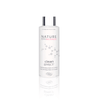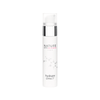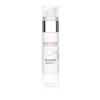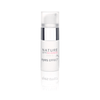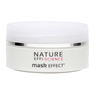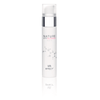How to avoid endocrine disruptors in cosmetics?

Endocrine disruptors (EDs) are dangerous chemicals found in many everyday consumer products, including cosmetics such as creams, perfumes and nail polishes. It is important to understand their impact and how to protect yourself from them in your daily life.
What is an endocrine disruptor?
An endocrine disruptor is a substance that interacts with the hormonal system, disrupting its functioning. The endocrine system regulates essential functions such as growth, development and reproduction. There are over 800 substances suspected of being endocrine disruptors, of which bisphenol A is the best known.
Origins of endocrine disruptors
These substances can be of natural or synthetic origin. They are present in water, air, industrial products and cosmetics. Parabens, phthalates and triclosan, commonly used in beauty products, are examples of endocrine disruptors found in our everyday products.
What are the effects of endocrine disruptors?
Endocrine disruptors can interfere with hormonal functioning in three different ways:
- Mimic a natural hormone, thus creating an exaggerated response.
- Block the action of a hormone by binding to its receptors.
- Alter hormonal production or regulation.
Health consequences
The effects of endocrine disruptors are numerous. They can affect fertility, cause birth defects, promote precocious puberty, and are linked to diseases such as obesity, diabetes and certain hormone-dependent cancers (breast cancer, prostate cancer, etc.).
Pregnancy and endocrine disruptors
Pregnant women and young children are particularly vulnerable. Endocrine disruptors can pass through the placenta and affect the development of the fetus, with consequences for the growth and health of the infant.
Which cosmetics contain endocrine disruptors?
Cosmetics can be a significant source of exposure to endocrine disruptors. Here are the main substances to avoid:
- Parabens: Used as preservatives, they are suspected of having an effect similar to estrogens and are linked to certain hormone-dependent cancers.
- Phthalates: Found in nail polish and perfumes, they disrupt thyroid hormones and can harm the nervous system.
- Triclosan: This antibacterial compound is found in deodorants and toothpastes. It is toxic to the liver and respiratory tract.
How to avoid endocrine disruptors in cosmetics?
1. Read labels
Make a habit of checking the composition of the cosmetic products you use. Avoid those that contain parabens, phthalates, triclosan or BHA/BHT. Prefer products with labels certifying the absence of harmful substances, such as " Cosmétic Organic " or "Ecolabel".
2. Choose natural products
Organic or natural cosmetics generally contain fewer endocrine disruptors. Look for brands like Nature Effiscience that focus on organic and natural plant ingredients, without harmful preservatives, alcohol or artificial fragrances.
3. Reduce the amount of cosmetics used
The fewer products you use, the less likely you are to be exposed to endocrine disruptors. Opt for a minimalist routine, with versatile products like eyes EFFECT that are kind to your skin and eyes.
What are the long-term risks?
Prolonged exposure to endocrine disruptors can lead to serious health problems . In addition to increased risks of hormone-dependent cancers, they can also contribute to hormonal imbalances , fertility problems, and metabolic disorders such as obesity or diabetes.
Studies on endocrine disruptors
Research shows that the entire French population is exposed to these substances, but children and pregnant women are the most affected. It is therefore essential to take measures to limit exposure from a young age.
Conclusion
To protect your health, it is crucial to avoid endocrine disruptors in cosmetics. Opt for organic products, reduce the use of conventional cosmetics and favor safe packaging. Take care of yourself by choosing products that respect your hormonal well-being.
Key points to remember:
- Endocrine disruptors can be present in all cosmetics and are harmful to health.
- Read labels carefully and choose products that are natural and free of dangerous chemicals.
- Limit the use of conventional cosmetics and favor organic or certified alternatives without endocrine disruptors.








